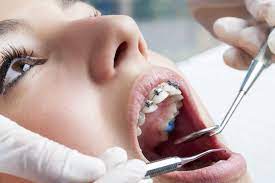Cost of Orthodontic Treatment
April 3rd, 2024
As you delve into the world of orthodontic treatment, understanding the financial aspects is just as crucial as understanding the clinical ones. While the cost of treatment can vary significantly based on the complexity of your case and other factors, it’s essential to consider additional factors that may affect your out-of-pocket expenses.
Insurance Coverage and Financing: Navigating Your Benefits and Making Treatment Affordable
For many patients, insurance coverage and financing options play a significant role in making orthodontic treatment more accessible.
Insurance Coverage: Some dental insurance plans offer orthodontic coverage, which can help offset a portion of the expenses. However, it’s important to note that coverage levels and limitations vary widely among insurance providers and individual plans.
Before beginning treatment, it’s advisable to review your insurance policy to understand the extent of your orthodontic coverage. Your orthodontist’s office can also assist you in navigating your benefits and determining how they apply to your treatment plan. While insurance coverage can help reduce costs, it’s essential to be aware of any deductibles, copayments, or exclusions that may apply.
Financing Options: For patients concerned about the financial aspect of orthodontic treatment, many orthodontic practices offer flexible financing options to make treatment more accessible. Interest-free financing plans allow you to spread the cost of treatment over manageable monthly payments, making it easier to fit orthodontic care into your budget.
Orthodontic financing plans typically offer competitive terms and can be customized to suit your individual needs. By taking advantage of these financing options, you can focus on achieving your dream smile without worrying about the upfront financial burden.
Consultation: Your First Step
Before diving into the specifics of cost, the first step in your orthodontic journey is a consultation with a qualified orthodontist. During this initial appointment, the orthodontist will conduct a thorough examination of your teeth, jaws, and overall oral health to assess your individual needs.
The consultation allows the orthodontist to develop a personalized treatment plan tailored to address your specific concerns. It also provides an opportunity to discuss your treatment goals, ask any questions you may have, and address any financial considerations.
Understanding Phase One Orthodontics
Phase one orthodontics, also known as early or interceptive orthodontic treatment, is aimed at addressing orthodontic issues in children at a younger age, typically between the ages of 7 and 10. This early intervention helps guide the growth and development of the jaws, creating a more favorable environment for the eruption of permanent teeth and correcting certain bite problems.
The cost of phase one orthodontics can vary depending on the complexity of the treatment and the specific needs of the child. While it typically ranges between $2000 and $4500, it’s essential to consult with your orthodontist to get an accurate estimate based on your child’s individual case.
Comprehensive Orthodontic Treatment
Comprehensive orthodontic treatment, often referred to as full treatment, is typically initiated when all permanent teeth have erupted, usually around the ages of 11 to 13. This phase of treatment focuses on achieving optimal alignment of the teeth and bite, resulting in a straighter, healthier smile.
The cost of comprehensive orthodontic treatment also varies depending on factors such as the complexity of the case, the type of braces or aligners used, and the duration of treatment. On average, comprehensive treatment ranges between $5000 and $7000. However, it’s important to remember that this is just a general estimate, and the actual cost may differ based on individual circumstances.
Conclusion
Orthodontic treatment is a valuable investment in your oral health and overall well-being. While cost is undoubtedly a consideration, it’s essential to prioritize quality care and the expertise of a qualified orthodontist. Your orthodontist will work with you to develop a personalized treatment plan that meets your needs and fits your budget, ensuring you achieve the smile you’ve always wanted. Don’t hesitate to discuss any questions or concerns you may have about the financial aspects of treatment. With the right guidance and support, you can achieve the smile you’ve always wanted while staying within your budget. Remember, the first step is scheduling a consultation to discuss your options and get started on your journey to a confident, beautiful smile.






